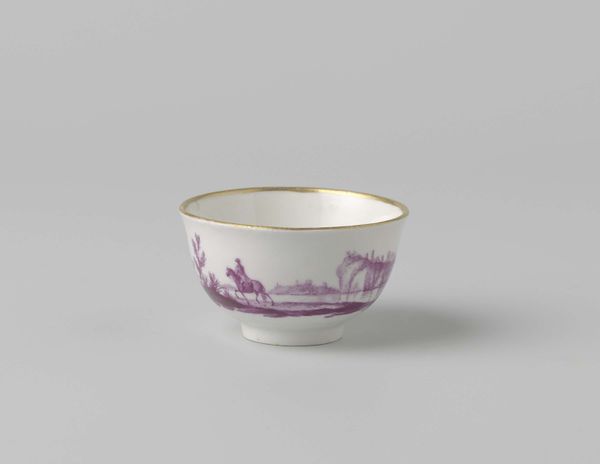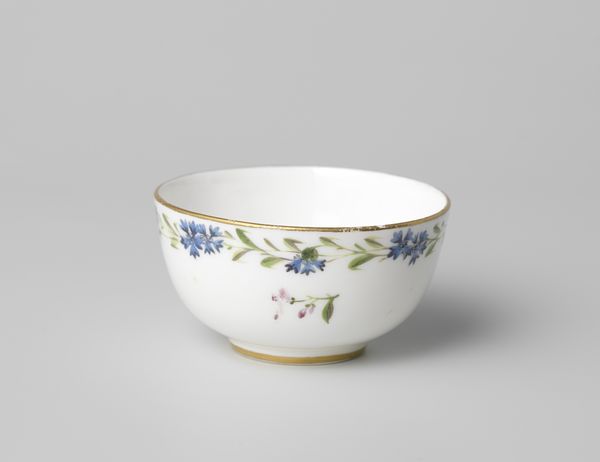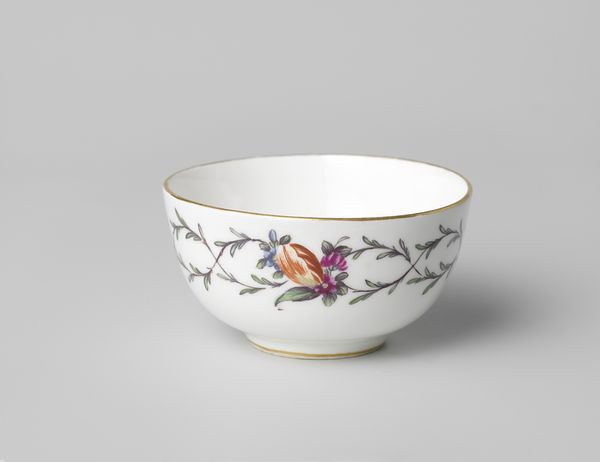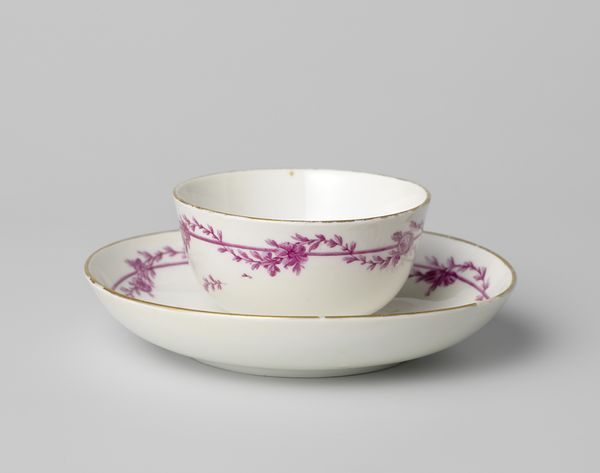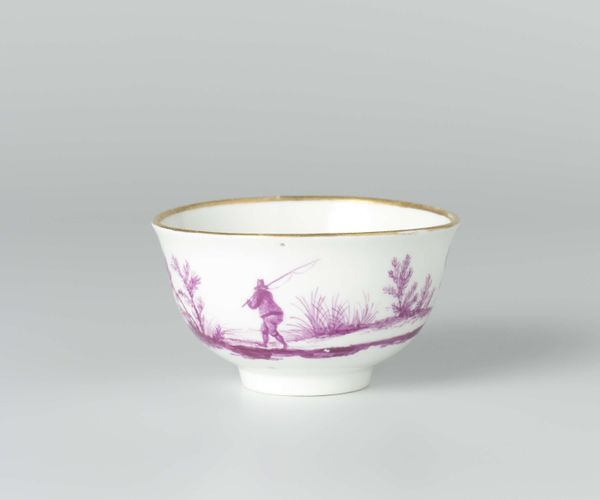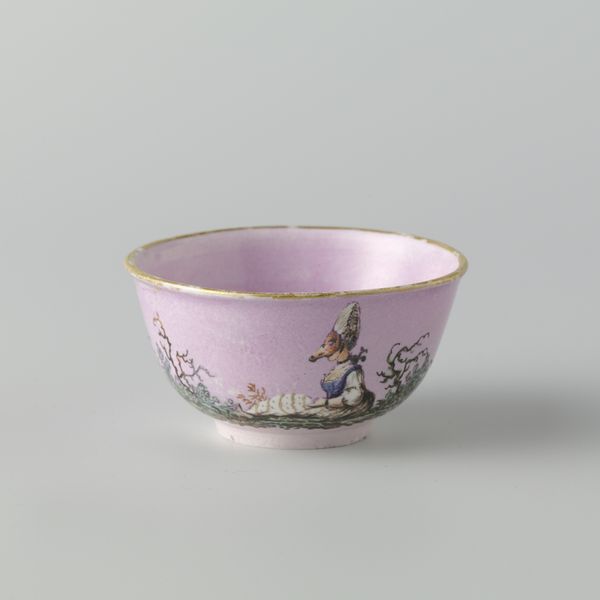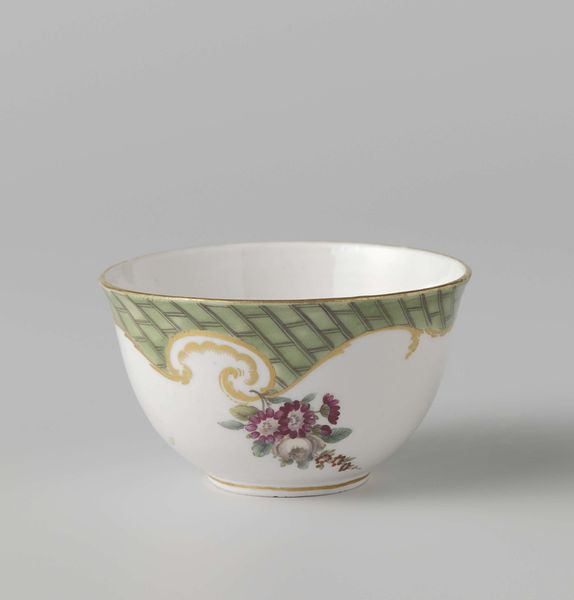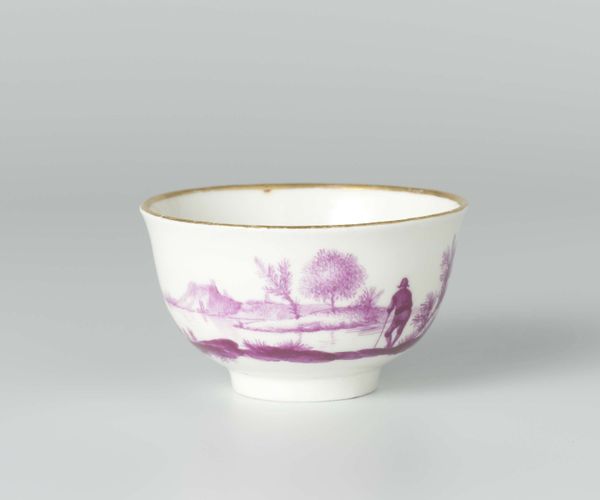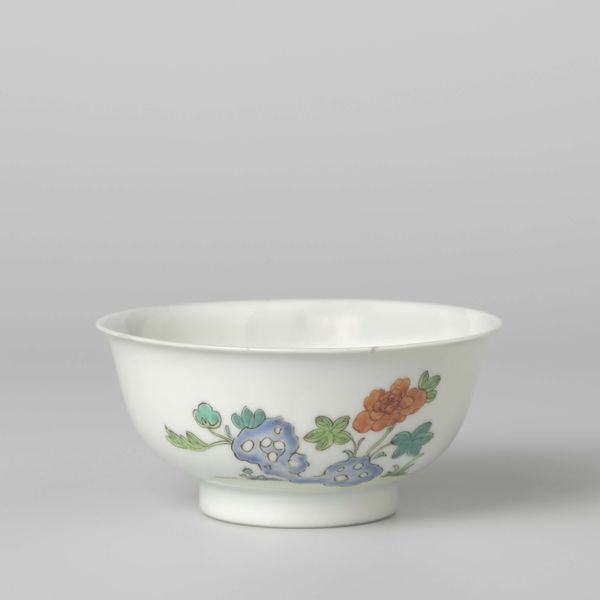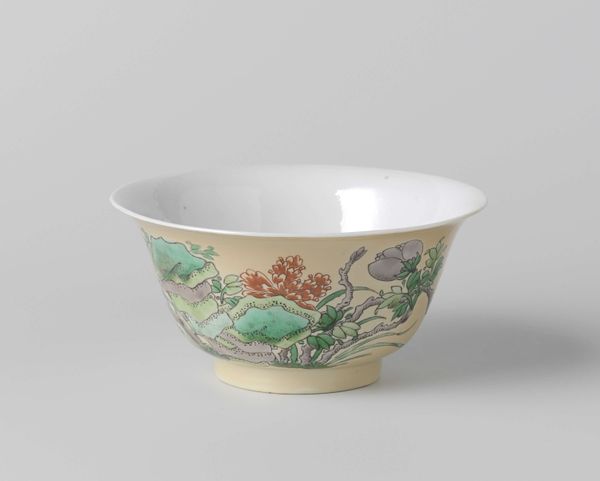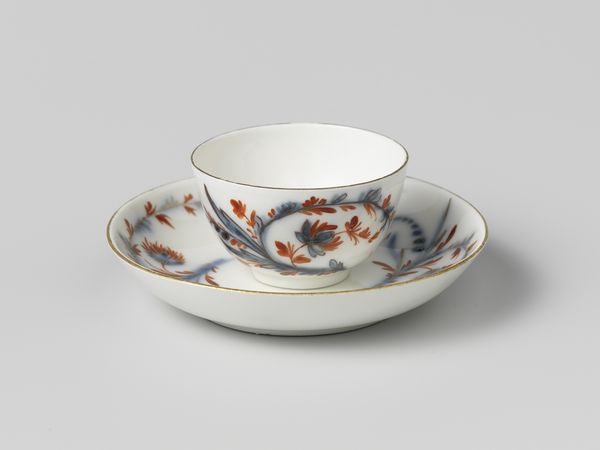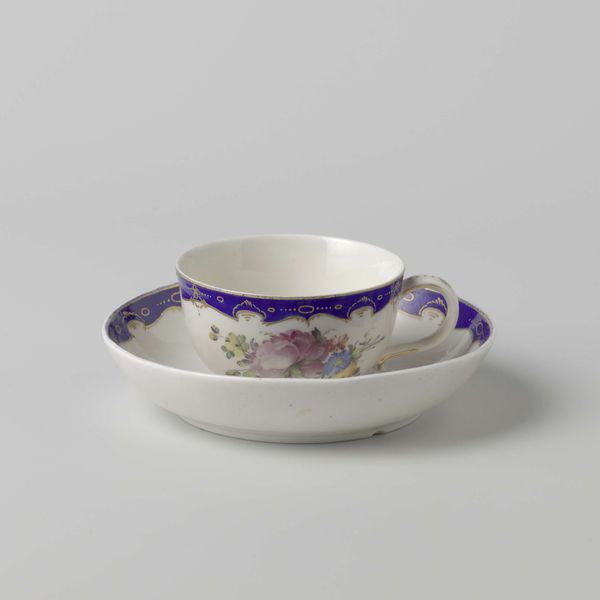
Dimensions: height 3.8 cm, diameter 7.4 cm
Copyright: Rijks Museum: Open Domain
Editor: Here we have 'Kop zonder oor,' a porcelain bowl from around 1780, crafted in Loosdrecht. I find the delicate floral band surprisingly grounding, given its rococo origins. How would you approach interpreting its visual structure? Curator: Focusing solely on its formal qualities, the spherical form is bisected horizontally by the stylized band of botanical motifs, creating a dialogue between pure geometry and organic ornamentation. Note how the repeating rose and leaf pattern dictates rhythm and the considered spacing emphasizes negative space. Editor: It’s interesting that you highlight the rhythm. I was struck by the simplicity of the decoration in contrast to the perceived extravagance often associated with rococo. Is there more to that? Curator: Indeed. Consider the use of color: a restrained, singular purple, which, along with the delicate gilding on the rim, accentuates, yet does not overwhelm, the pristine white porcelain. Observe the careful craftsmanship and precise execution. This simplicity in design might be interpreted as a movement away from the more ostentatious examples of Rococo. Do you notice the slightly worn edges of the gold lining? Editor: Now that you mention it, yes. It appears to soften the sharpness of the porcelain and adds a time element to the whole composition. Curator: Precisely! Furthermore, note that the subtle imperfections further challenge any notion of absolute perfection and encourage us to engage with the bowl's intrinsic materiality. Editor: It is amazing how looking at the form, color, and even imperfections can give you a new insight into the design itself! I see how formalism really helps to explore design choices.
Comments
No comments
Be the first to comment and join the conversation on the ultimate creative platform.
